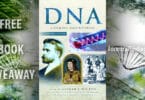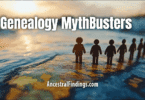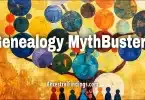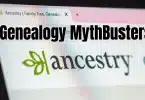In recent years, DNA testing has become one of the hottest tools in genealogy. It promises quick answers to old questions, colorful charts that tell you your ethnic breakdown, and even lists of genetic cousins you never knew you had. For many researchers, DNA has been a game-changer. It has reunited families, broken through long-standing mysteries, and added a powerful new dimension to traditional research.
But with all that excitement comes a myth: the belief that DNA testing will solve every brick wall. Many people assume that if you just spit in a tube, all of your genealogical puzzles will untangle themselves. That simply isn’t true. DNA is powerful, but it is not magic. It has limits, and those limits matter.
In this essay, we’ll look at why this myth exists, where DNA really shines, where it struggles, and how you can use it wisely as one tool in a larger toolkit.
Why the Myth Exists
The myth grew out of marketing. Testing companies advertise DNA as a way to “discover your story” or “find your ancestors instantly.” The pie charts and percentages look so official that it’s easy to believe they represent definitive truth. Add to that the flood of TV shows where celebrities take DNA tests and suddenly learn about royal ancestors or long-lost cousins, and you can see why people expect miracles.
There’s also the problem of wishful thinking. Brick walls are frustrating. Every genealogist has them: that elusive ancestor with no paper trail, the immigrant who seemed to appear out of nowhere, or the illegitimate birth that no records explain. It’s only natural to hope DNA can cut through all of that in one clean step.
Where DNA Truly Shines
To be clear, DNA is powerful. It has solved adoption cases where no records existed. It has identified unknown fathers, mothers, and grandparents. It has reunited families separated for decades. In some cases, it has proven connections that paper records only hinted at.
For example, autosomal DNA (the kind most companies test) is excellent for finding relatives within about five to six generations. Y-DNA can track direct paternal lines, sometimes connecting men to specific surname groups. Mitochondrial DNA traces the maternal line back many generations. Each of these tools has helped researchers break through walls that once seemed impossible.
But notice the key word: some. DNA can provide strong evidence in the right situations, but it does not apply to every mystery.
The Limits of DNA
Here’s where the myth falls apart. DNA cannot solve every problem.
- Endogamy: In populations where cousins often married cousins — like in Ashkenazi Jewish, Acadian, or Polynesian communities — everyone shares DNA with everyone else. This creates thousands of “cousins” who are actually related multiple ways, and it makes it almost impossible to sort out specific lines.
- Database gaps: DNA is only as good as the pool it is compared against. Some regions of the world are underrepresented in testing databases. If your ancestors came from rural Africa, Central Asia, or small villages in Eastern Europe, you may not have enough matches to get useful results.
- Generational distance: DNA gets diluted with each generation. By the time you go back seven or eight generations, you may not carry any DNA from a particular ancestor, even though they are part of your tree. That means DNA cannot confirm every single branch.
- Non-paternity events: Discoveries of adoptions, affairs, or undocumented relationships can complicate results. Sometimes DNA reveals unexpected truths, but other times it creates more questions than it answers.
- Lack of records: DNA can suggest a relationship, but without documents, it often cannot tell you exactly how two people connect.
Case Studies
Consider a researcher trying to identify a fourth great-grandparent born in the 1700s. Autosomal DNA matches might point to a cluster of families in the same county, but after that, the trail goes cold. The DNA cannot reach back far enough with precision. Paper records are still needed.
Or think about an adoptee searching for parents. DNA may produce close matches, but if those matches refuse to respond or don’t know their own family history, the puzzle remains unsolved. DNA provides clues, not guarantees.
Then there’s endogamy. In Acadian research, for example, DNA results often show thousands of cousin matches, all overlapping. It becomes a spaghetti bowl of shared DNA segments. Without careful triangulation and documentary research, it’s nearly impossible to separate one line from another.
Using DNA Wisely
The key to breaking the myth is not to dismiss DNA, but to put it in its proper place. It is not a magic bullet, but it is an incredibly useful tool when paired with traditional genealogy.
Here are some best practices:
- Cluster analysis: Group your DNA matches into clusters of shared ancestry. This can help point you toward specific family lines.
- Combine with documents: Always pair DNA evidence with paper records. Birth certificates, deeds, church registers, and probate files can confirm what DNA suggests.
- Test widely: Encourage as many relatives as possible to test. A single test may not solve the puzzle, but multiple relatives testing can provide stronger triangulation.
- Use the right test: Autosomal for general relationships, Y-DNA for paternal surname studies, mitochondrial for maternal lines. Different tools fit different problems.
- Stay realistic: Accept that not every brick wall will fall. Sometimes the evidence simply isn’t there, in DNA or in records.
Why the Myth Matters
Believing DNA can solve everything can waste time and money. People spend hundreds of dollars on tests, expecting instant answers, only to end up frustrated. Worse, they may abandon traditional research, thinking DNA will do all the work for them.
This myth also creates false hope. It leads people to believe that mysteries from centuries ago can be solved with a cheek swab. The reality is more nuanced. Some puzzles may remain unsolved, no matter how much DNA you test.
The Real Story
So, will DNA testing solve every brick wall? No. It is not a master key. It is not a substitute for records, and it is not guaranteed to crack every mystery.
The real story is that DNA is one of the most powerful tools we have, but it works best when combined with traditional genealogy. It can point the way, it can confirm suspicions, and it can open new doors. But it cannot walk the path for you. The heart of genealogy still lies in records, context, and persistence.
DNA can shine a light, but it will not rebuild the whole house. That work still belongs to you.






